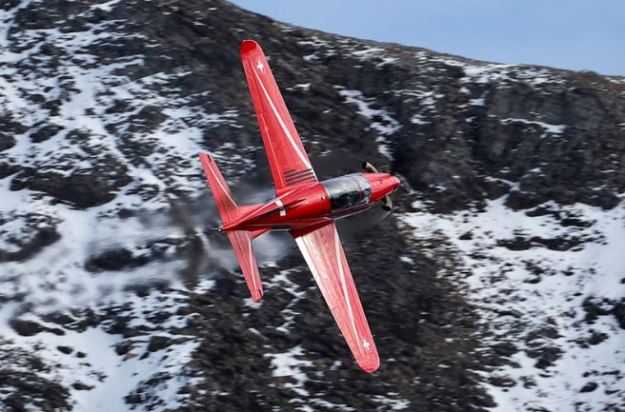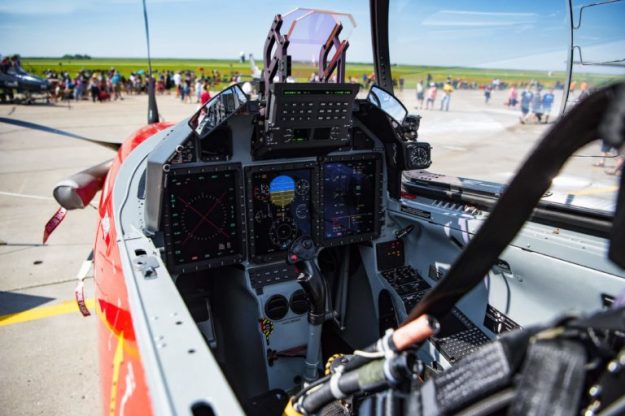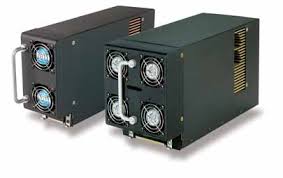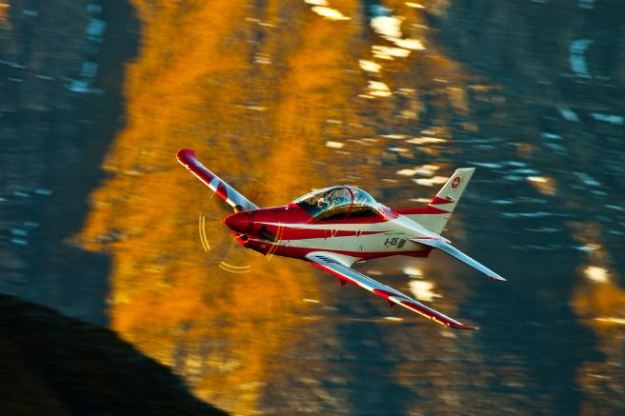Pilatus Aircraft Limited rolled out the PC-21 training aircraft in May 2002. The PC-21 expanded envelope trainer aircraft is designed to fulfil the requirements for basic, advanced and fighter lead-in training for pilots and, if required, weapon systems officers (WSO).
The PC-21 project was launched in November 1998 and the development programme began in January 1999. First flight was in July 2002. The first aircraft has successfully completed over 400 flight hours. The second test aircraft made its maiden flight in June 2004 but, in January 2005, was destroyed in an accident which claimed the life of the pilot. A brief grounding of the first prototype was unconditionally cancelled shortly after.
The first pre production aircraft made its maiden flight in August 2005 and a second joined the flight test programme in 2006.
The PC-21 received certification for VFR (visual flight rules) operation in December 2004 and full certification for IFR (instrument flight rules) in December 2006.
Pilatus PC-21 training aircraft orders and deliveries

pilatus-aircraft.com
In November 2006, the Republic of Singapore Air Force (RSAF) awarded a contract to Lockheed Martin Simulation, Training and Support to operate the RSAF Basic Wings Course and Pilatus supplied 19 PC-21 trainers under the contract. The first six were delivered in April 2008 and the RSAF began flight training with the PC-21 in July 2008.

Citation Ten @flicker
In January 2007, Pilatus received an order from the Swiss Air Force for six PC-21 aircraft. All six were delivered in 2008.
Pilatus was awarded an additional CHF30m ($31.87m) contract by the Swiss Air Force in December 2010 for two PC-21 training aircraft. The contract also includes logistics and engineering services and supply of a debriefing system. Deliveries began in 2012.
Under a $494m contract signed in December 2009, the United Arab Emirates Air Force and Air Defence will procure 25 PC-21 turboprop aircraft. The contract also includes supply of an integrated ground-based training system and a comprehensive logistics support package. The maiden flight of the first PC-21 to be deployed at the UAE Air Force was completed on 22 November 2010.

Saudi Arabia – pilatus-aircraft.com
Deliveries of 25 PC-21 equipped with the Pilatus training system to the UAE began in the first quarter of 2011. In May 2012 Saudi Arabia signed a contract with BAE systems to provide supply 55 Pilatus PC-21 aircraft and 22 BAE Systems Hawk Advanced Jet Trainer aircraft, which will be used to train pilots to fly Eurofighter Typhoon jets.
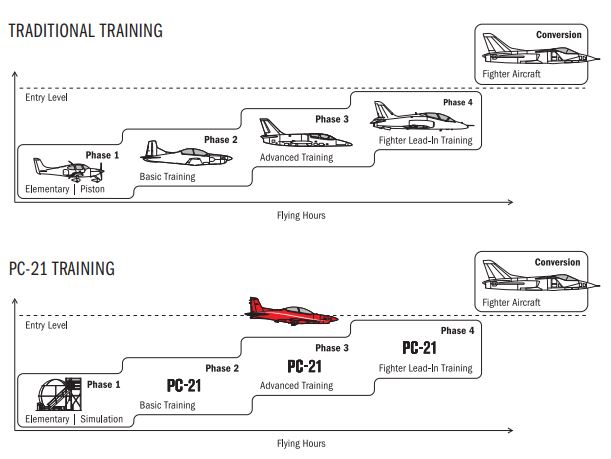
pilatus-aircraft.com
PC-21 training turboprop aircraft features
The aircraft combines the procurement and operating costs of current-generation turboprop aircraft with a jet training capability. It has a higher wing loading that is more characteristic of a jet and the engine’s power output is scheduled by using a sophisticated power management system.
Operational conversion unit (OCU) training such as night vision goggles, basic radar interception and the simulated deployment of smart weapons can be transferred to the PC-21. By employing a PC-21 for straight-through training the cost of training a student to ‘wings graduation’ can be significantly reduced, the training time shortened and the student pilot’s advanced training failure rates reduced.
The aircraft is fitted with a fully digital glass cockpit with head-up displays, an up-front control panel (UFPC), hands-on throttle and stick (HOTAS) control and full sized multi-function displays giving a similar cockpit environment to current generation fighters, such as the AV-8B, F-16, F/A-18 and Gripen.
PC-21 aircraft design
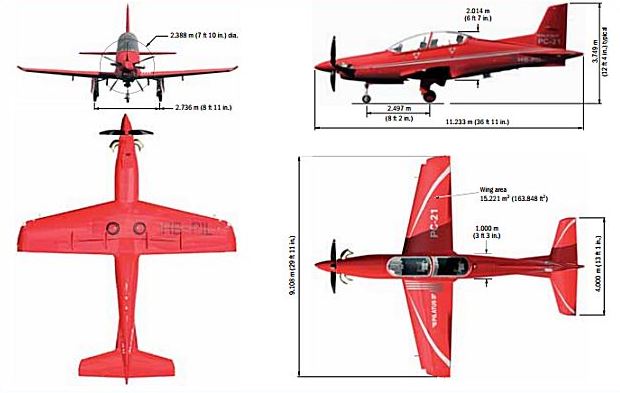
airrecognition.com
The PC-21 has a high-efficiency, three-spar, swept wing design with hydraulic ailerons supported by spoilers. The leading edges of the wings are of high-impact resistant material. The aircraft incorporates automatic yaw compensation.
The Mecaplex two section acrylic canopy has a thickened bird-strike-resistant front section.
Cockpit
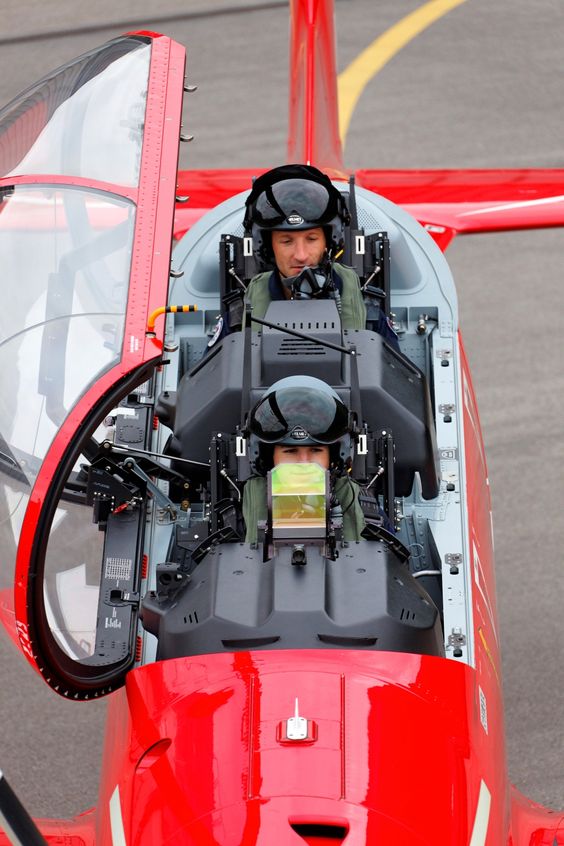
pilatus-aircraft.com
The pressurised tandem cockpit has an automated cockpit conditioning system, an anti-g system, and an on-board oxygen generation system (OBOGS). The Martin Baker Mark 16L zero-zero ejection seat has command ejection. The pilots have good all-round view: the front seat pilot has an 11 forward view and the rear pilot a 40 view.

Anura @flicker.com
Each cockpit is fitted with three 152mm×203mm (6in×8in) active matrix liquid crystal displays (AMLCD). The central liquid crystal display is the primary flight display (PFD). The bezel-mounted display buttons and up-front control panel (UFCP) buttons are used to select the navigation, mission, systems and tactical data displayed on the two outer multi-function displays. Two 761mm Meggitt secondary back-up displays alongside the UFCP show the primary flight display, systems and essential engine data. All the PC-21 cockpit displays and lighting systems are night vision NVIS class B compatible.
The forward cockpit is fitted with a Flight Visions SparrowHawk head-up display with a FVD-4000 HUD symbol generator and the rear cockpit is equipped with a full colour HUD repeater display showing the view from the HUD camera, overlaid with HUD symbology information.

pilatus-aircraft.com
The front and rear cockpits can be fully decoupled, allowing the instructor access to training modes and sensor data unavailable to the trainee pilot.

pilatus-aircraft.com
Martin Baker Mark 16L zero-zero ejection seat

It optimises the pilot field of view, improves comfort and pilot efficiency, and provides increased reliability and maintainability. With the Mk16 lightweight low-speed seat, ejection performance is optimised throughout the escape envelope, from zero height at zero velocity in a near level attitude through to 370 knots. It is designed to accommodate a very wide size and weight range.
US16LA EJECTION SEAT
- Operating Ceiling: 50 000ft (15,250m)
- Minimum height/Speed: Zero/zero in near level attitude
- Crew boarding mass range: 62.3 to 123.0 kg
- Crew size range: JPATS multi-variate body size cases 1 to 7
- Maximum Speed for ejection: 370 KIAS (aircraft limit 316 KIAS)
- Parachute type: GQ Type 5000
- Parachute deployment: Cartridge initiated
- Drogue parachute: 5 ft
- Drogue deployment: Cartridge initiated and deployed
- Harness type: Torso
- Ejection seat operation type: Ejection guns and underseat rocket motor
- Ejection gun: Twin
- Ejection initiation: Handle on seat bucket initiates gas operated seat firing system
- Automatic back-up unit: No, manual override
- Electronic sequencer: No
- Barostatic time-release unit: Yes + g-restrictor, cartridge initiated
- Timers: Time delays in sequencing system
- Seat adjustment: Up/down actuator operated 28 Vdc
- Arm restraints: No
- Leg restraints: Yes, two garters
- Oxygen supply: Bottled emergency oxygen
- Personal survival pack (PSP): Yes + automatic deployment
- Aircrew services: Connection to emergency oxygen supply
- Command ejection: Yes, via Interseat Sequencing System (ISS)
- Canopy jettison: No
- Canopy fracturing system: Yes
- Interseat Sequencing System (ISS): Yes
Source martin-baker.com
The aircraft’s CMC Electronics FV-4000 mission computer is fitted with 500MHz Power PC G4 processors, each with 512MB memory for real-time, high refresh rate data processing. The open system avionics architecture allows for adaptation and system upgrade.
CMC Electronics FV-4000 mission computer
The FV-4000 features 500 MHz PowerPC G4 processors with up to 512 Mbytes of memory per processor for processing critical data in real time and at a high refresh rate. It has extensive video switching and graphics generation capability and includes an industry leading,14 Gbyte solidstate mass memory card. Its processing is supported by modules which can be added for
high-resolution graphics in the case of multifunction displays or for interfacing to any avionics bus or signal used with either military or civil systems.
The navigation suite includes an integrated laser inertial navigation sensor, a global positioning system and Kalman filter. The systems have ARINC and military-standard 1553B data bus interfaces.
Weapons
Four under-wing stores pylons and one centreline pylon can be installed.
Mission planning and training
A mission planning system (MPS) allows fast ground-based mission planning. The MPS provides benign handling for early stages of pilot training, while providing higher performance handling characteristics for advanced pilot training. The mission planning data is downloaded into the aircraft via a mission data loader.

pilatus-aircraft.com
The mission data loader is compatible with all the PC-21 ground-based training systems and simulators. The mission data loader is also used for mission recording as the data storage medium. Mission recording is automatic from power-on to engine shutdown to allow complete mission playback after the flight. The system records all the display input data including the full colour head-up display, with event markers if required.
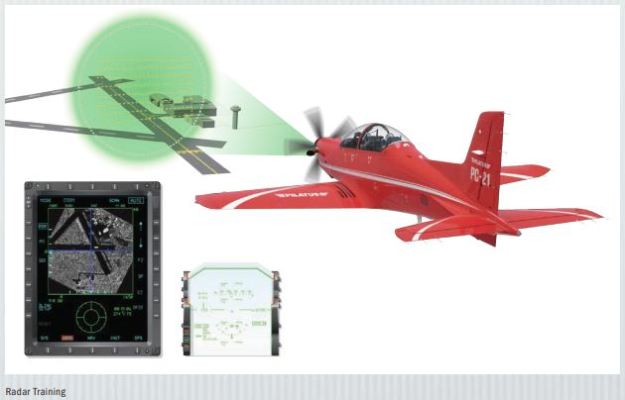
pilatus-aircraft.com
A separate solid-state memory system is used to record the engineering data for the health and usage monitoring system (HUMS).
The up-front panel control (UFPC) allows information to be input into the aircraft’s mission and navigation systems. System operational modes include navigation, air-to-ground and air-to-air weapon aiming and FMS.
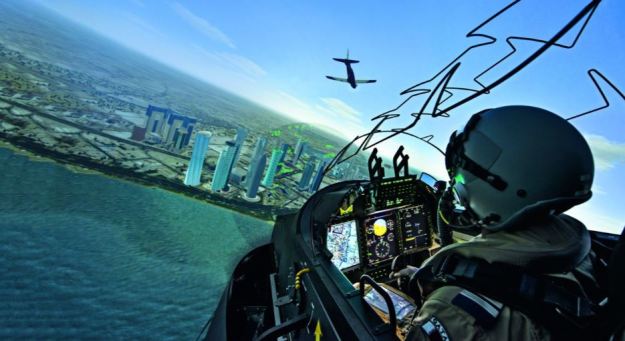
pilatus-aircraft.com
Virtual avionics prototyping system (VAPS) was used for the design of the software which allows fast and efficient changes to the avionics as requested by a customer. The VAPS is used in both the aircraft avionics and in the ground-based training systems, ensuring that both function to the same software release standard.
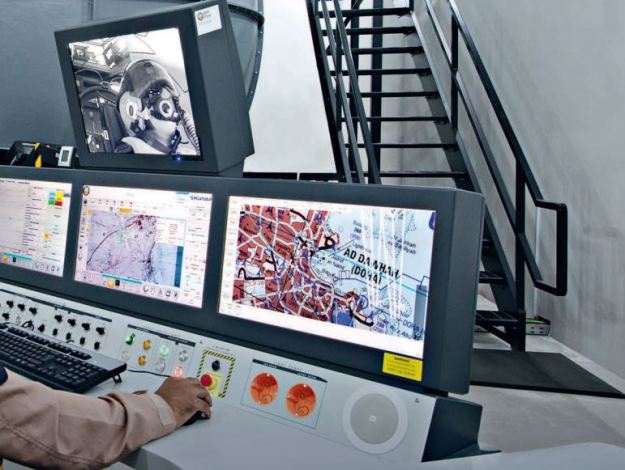
pilatus-aircraft.com
The avionics system can be modified to suit the student pilot’s phase of training. The avionics simulates front-line mission systems, including weapon aiming and the simulated release of weapons even when training rounds are not carried.
Engine
The aircraft is powered by a Pratt & Whitney PT6A-68B turboprop engine rated at 1,200kW (1,600shp) with a Hartzell E8991 KX five-bladed graphite propeller. The engine is fitted with a digital power management system which brings up full power at speeds over 360 km/h and gives the trainer aircraft a jet-like response.

Le Pilatus PC-21 vu sur sa longueur © Radio France – Pierre MARSAT via francebleu.fr
PT6A-68B turboprop engine

avcom.co.za

PW
PC-21 performance
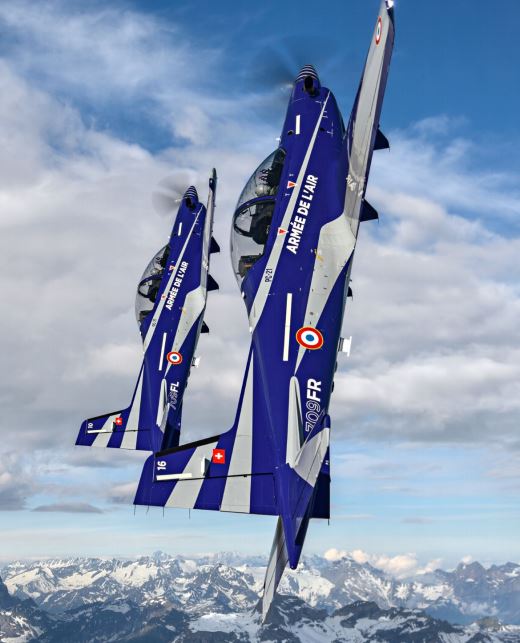
pilatus-aircraft.com
The PC-21 can climb at a rate of 4,250 fpm and its maximum speed is 685 km/h. The aircraft can fly up to an altitude of 7,620m. The range and service ceiling of the PC-21 are 1,297 km and 11,582m respectively.
The low-altitude speed and climb rate for the PC-21 is more characteristic of a jet aircraft than a turboprop. The maximum level speed at low-altitude flight is 590km/h.
The aircraft’s take-off distance is 725m and landing distance, 900m. The aircraft weighs 2,330kg.
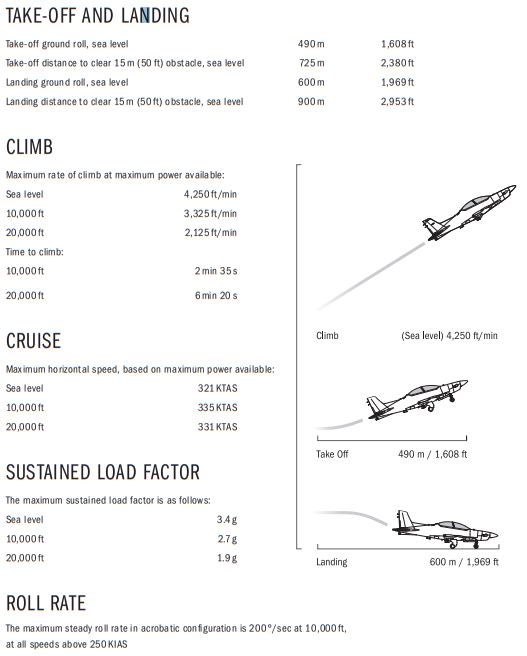
pilatus-aircraft.com
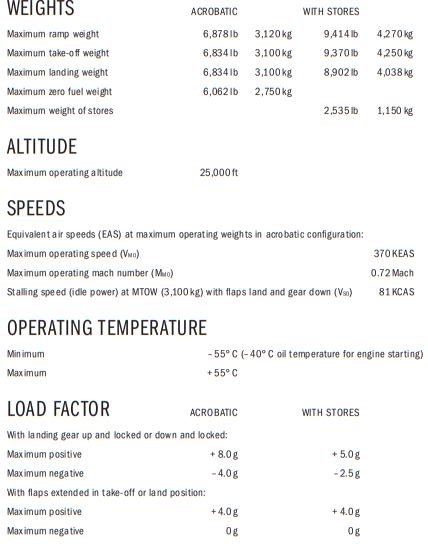
pilatus-aircraft.com
Main material source airforce-technology.com
Main image pilatus-aircraft.com
Images are from public domain unless otherwise stated



